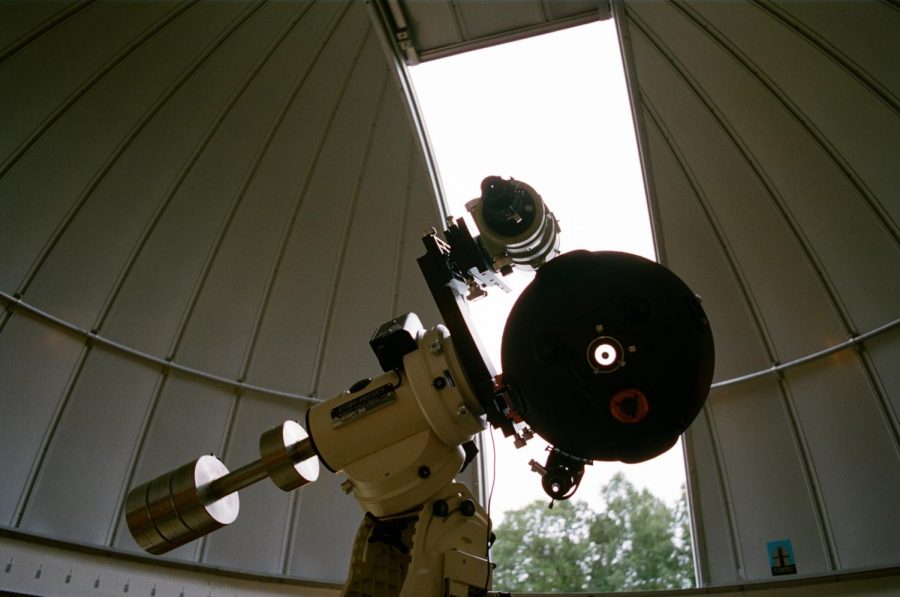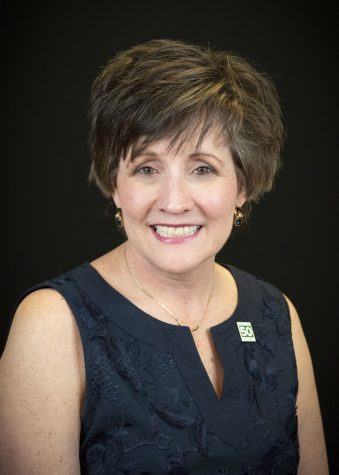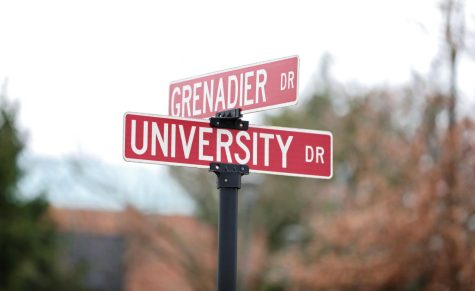A Passion for the Stars
One man’s lifetime love of astronomy benefits campus stargazers
Dr. Gerald Ruth and his wife Ellen in front of the IUS observatory. Photo by John Clere
At age 14, IUS professor Gerald Ruth, emeritus of geosciences, grinded a handmade mirror for his first telescope. He grinded it to the exact precision as the mirror originally used in the Hubble Space Telescope.
Ruth developed his passion for astronomy early in his youth.
“I’ve had a passion for astronomy for as long as I can remember,” Ruth said. “My mother told me that when I was born the stars came down from the sky and fell onto her bed. I have no idea what that means, but it’s what she always told me.”
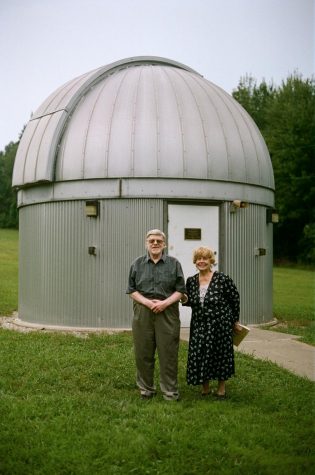
Ruth’s love for astronomy continued in 1982 when he founded the IUS Astronomical Society (IUSAS). Ruth remains Director of the IUSAS today and oversees the operation of the observatory on the IUS campus.
“Dr. Ruth is an inspiration,”IUS Astronomy Professor CJ Jackson said. “People may not be aware that Dr. Ruth volunteered thousands of hours and donated a significant amount of his personal funds toward astronomy-related efforts at IUS.”
“When Dr. Ruth retired in 2015, he donated a new telescope system, an outstanding resource for IUS and the community,” said Jackson.
The IUS observatory has many tools available, some of them handmade, to help students explore the night sky in a wide variety of ways.
On every surface in the small building rests a vast collection of optical tools.
“We have a charge-coupled device and all sorts of cameras, both film and digital,” Ruth said as he pointed toward a pair of what appeared to be very large binoculars.
“Those,”said Ruth, his eyes widening with excitement, “let you take a tour of the moon. It’s like you’re taking a helicopter ride over the moon.”
Perched in the middle of the building on a tall metal pier, built by an IUSAS member, is the observatory’s centerpiece – the 14-inch diameter telescope donated to the observatory by Ruth. The telescope’s electronics are always powered on so it can keep Sidereal time, the measurement of time used to track the locations of stars and planets relative
to Earth.
The observatory is a small round building on the far north end of the IUS campus located in a valley. Ruth pointed out it’s an unusual location for an observatory because of the unique geography of the campus and surrounding area.
“Usually telescopes go on top of hills or mountains. But we’re so close to Louisville and get so much light pollution that we actually want to put our telescope in a valley to block out light,” Ruth said as he gestured toward the surrounding trees guarding the observatory from
stray light.
Bright lights reduce nighttime visibility and make it harder to see stars, so ideally the observatory would be far removed from
city lights.
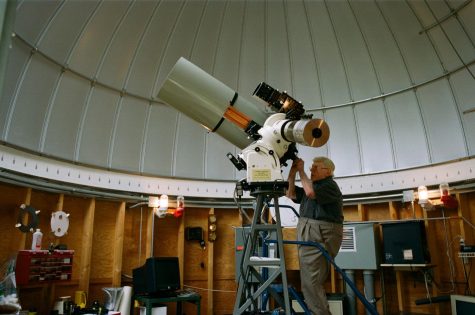
Ruth said he intends to continue to work at the observatory for as long as he can.
“In 50 years,I won’t be around, that’s for sure. I worry if this will even be around in 30 years,” Ruth said. “I hope it is, but I don’t know.”
Ruth voiced his concern that all classes may be taught online instead of campus-based in the future, which would put into question the utility of an on-campus observatory.
General student awareness of the observatory and its functions seems to be low according to Savannah Hatton, a senior at IUS. “I’d heard that there was [an observatory], but I don’t know much about it,” Hatton said.
“Night sky observation is becoming a lost art,” Jackson said. “The observatory is a great asset and should be used regularly.”
The observatory is scheduled to be renamed the Dr. Gerald Ruth Observatory in 2022.
Events at the observatory are difficult to schedule due to the unpredictable nature of certain astronomical events.
“We usually come out here when something big happens,” Ruth said.
The observatory holds monthly viewings, open to the public, on the first consecutive Saturday and Sunday nights of each month, barring inclement weather conditions. A schedule for regular viewings is expected to be posted on the IUS
website soon.
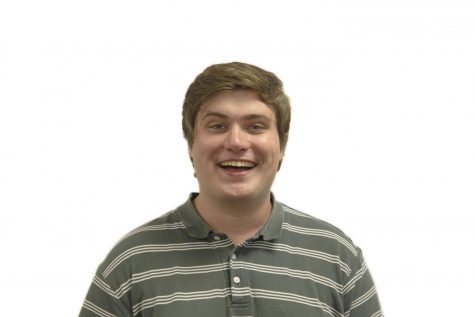
John is the third consecutive generation in his family to write for and edit a newspaper. He had his first column in a newspaper at age 13! News ink runs...

